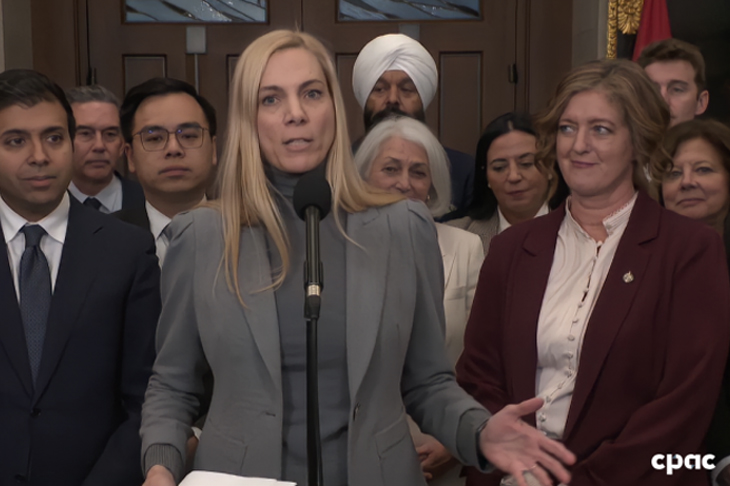Trying to make 2+2=5
By Greg O’Brien
OTTAWA – There’s essentially nothing the politicians can do directly about the proposed purchase of Shaw Communications by Rogers Communications because the arbiters are the CRTC, Competition Bureau and ISED. But that would never stop them from extracting their pound of flesh from powerful CEOs, if they so desire. And they desired.
So it was on Monday when Joe Natale, president and CEO of Rogers Communications, and Brad Shaw, CEO of Shaw Communications (along with other senior executives) faced the Standing Committee on Industry, Science and Technology and attempted to explain to mostly dubious MPs why their merger is good for Canadians.
Some of the committee members, though, had clearly been briefed on a key issue now flummoxing the federal government: What to do about Shaw’s participation in the June 3500 MHz spectrum auction, one where the rules allow Shaw to purchase airwaves set aside more cheaply because they are for bidding only by smaller regional players, when that spectrum might then end up in the hands of the much larger player not allowed to bid on the set aside, months later.
However, the auction rules also say that if a regional player which buys set aside spectrum is then purchased by a national player inside of the five-year prohibition on selling said spectrum, the bigger player must divest that spectrum. It’s all a bit confusing, and we cover this for a living. Imagine how it is for the MPs who so far this year have also been studying the aerospace industry and Covid-19 vaccine production while prepping for a possible election.
It’s not as though ISED has a long time to consider what to do, either. The June auction application deadline for companies wishing to participate is April 6th and ISED is expected to publish the list of qualified bidders by the following Monday, April 11. Many of the committee members groused Monday about the timing of the Rogers/Shaw deal.
What’s handy for Rogers and Shaw is the rules of the auction prohibit company executives from saying almost anything at all about their auction plans, lest it spoil a fair auction. Violate the rules, and you’re tossed out of the auction, which is a penalty no one can afford. So Natale and Shaw had a similar answer to a lot of MP questions about spectrum and the auction: Variations of “I can’t comment on that.”
The companies are also strictly prohibited from talking to each other about the auction, but not until after the April 6th application deadline.
This means it should come as no surprise some muscular lobbying is now going on behind the scenes to prevent Shaw from being able to bid on set aside spectrum, Cartt.ca has learned, and was touched on last week in the Globe and Mail.
The makers of the auction actually contemplated this exact scenario within the rules because there are prohibitions against “associated” or “affiliated” companies bidding on set aside spectrum. So, since Rogers and Shaw have entered a binding sales agreement (with an $800 million break fee), Shaw may no longer qualify to bid on set aside spectrum on its own, even though the deal is many months away from completion. (Update: And, for what it’s worth, if Rogers breaks the deal, they would owe Shaw $1.2 billion.)
The auction framework says participants are associated entities if they enter into an agreement to merge, for example, unless they can prove they will bid separately and operate separately. ISED, of course, structured the auction so that none of the Big Three get access to set aside spectrum using an associated or affiliated entity in order to promote more players in the wireless market.
Various companies and groups are now pointing out to ISED Shaw surely is now associated and affiliated with Rogers because Rogers can now effectively control Shaw’s actions, which should disqualify it from bidding on set aside spectrum.
As mentioned, ISED rules do allow an associated entity to bid on set aside spectrum if they can show the two companies intend to separately and actively provide services in licence areas. However, say those opposed to Shaw’s auction participation and who asked to remain anonymous, the public statements made by Natale and Shaw so far make it seem as though the companies will be operating as one. Certain clauses in the purchase agreement, available on SEDAR, also make it look that way.
“We spent a lot of time looking at how does two plus two equal five.” – Joe Natale, Rogers Communications
If Shaw is not allowed to bid on set aside spectrum, however, that would leave one deep-pocketed buyer out of the auction. This means potentially less revenue from the auction for the federal government, or bids by smaller companies who could be considered spectrum speculators hoping to sell licences after the five-year waiting period prohibiting sale of such licences expires, at a nice profit.
That scenario would leave extremely important mid-band 5G spectrum laying fallow – which is already an issue since Shaw and others have not yet deployed all the spectrum they already own. Many in the industry say ISED should adopt a “use it or lose it” spectrum strategy, to make sure spectrum is deployed quickly and not trafficked.
Of course, if Shaw is prevented from bidding on set aside 5G spectrum alone and the deal is cancelled after the fact, or even if Rogers is forced to divest Shaw’s wireless assets, any buyer of Freedom Mobile, which would then be a wireless company with no 5G spectrum, will end up severely handicapped for the future.
Could the 3500 MHz auction be delayed again because of this? One highly placed source who spoke on condition of anonymity said that shouldn’t happen because of this merger agreement, but may well be delayed if ISED lets Shaw bid on set aside spectrum and others launch legal challenges. Such a scenario, of course would severely delay Canada’s 5G buildout for all players, causing the country to fall behind.
All. That. Said… Back to the politicians trying to make sense of this on Monday. They peppered the executives for two hours getting them to explain how one big company disappearing so another can get even bigger would be good for Canadians’ connectivity and pocketbooks. The MPs said prices are too high and Shaw and Rogers said in response they are coming down. We’ve covered this dichotomy ad nauseum.
Natale, however, best explained how gaining Shaw’s extensive wired footprint in the west will help the combined company accelerate 5G: Rogers won’t have to overbuild with new fibre, whose backhaul is an awfully significant portion of 5G’s future and; Shaw, in turn, won’t have to build out more urban wireless on top of existing networks. Then those savings can together be plowed into expanding connectivity in rural regions – which have no, or poor internet, or just one provider – and lowering prices.
“We spent a lot of time looking at how does two plus two equal five,” explained Natale. “As we bring the two organizations together, at the heart of it, is the fact we both spend a lot of capital on networks and capabilities and by making that capital expenditure complimentary versus duplicative, we can go further and go faster and that’s at the heart of the synergy.
“If… we bring the two companies together, we can take a portion of one of our networks to be the network for the combined business and then we can take the money we would have spent on the duplicative network and extend further and faster into rural Canada.
“So, that by definition creates jobs and that by definition makes us a greater competitive force.”
The committee meets next on Wednesday afternoon and will hear from Videotron, the Canadian Communication Systems Alliance, OpenMedia, the Public Interest Advocacy Centre and TekSavvy.
We’re not supposed to screen cap these virtual committee proceedings, but we couldn’t resist showing you how company founder Ted Rogers was slyly in the background, smiling and seemingly saluting, Mr. Natale.









